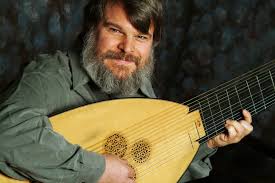All sessions begin with a presentation to lend direction to the ensuing discussion. Rather than subscribing to a traditional conference format, presentations for Big Data for Intimate Spaces are informal demonstrations of projects and/or programming that relate to projections for the development of IDEA: Isabella d’Este Archive. Our focus is on evaluation of features in multi-media and big-data programs for use in the arts & humanities and on integration of projects and programming within IDEA.
All sessions will be conducted in a combination of English and Italian.
Conducting Research in an Online Manuscripts Archive
Demo: IDEA Manuscripts Interface
Roberta Piccinelli, Università di Teramo
Lorenzo Pasquinelli, Florence, Italy
Wednesday 25 February 2015
3:30-5:00pm
Odum Institute
Davis Library, second floor
Free and open to the public – space is limited
3D Reconstructions and Cultural Heritage Communication
Antonella Guidazzoli
Senior Programmer
CINECA (Inter-university Supercomputer Center, Bologna, Italy)
Thursday 26 February 2015
9:00am – 10:30am
Davis Library HUB
Free and open to the public
This presentation demonstrates the experience of modeling a philological three-dimensional scenario as a set for a 3D stereo cartoon movie in the Cineca MDC (`Museo della Città’) cultural heritage project, and offers projections for its use to study the intimate rooms of Isabella d’Este’s studiolo in Mantua.
In 2009 – 2011 Cineca was involved in the challenge of reconstructing three-dimensional historical scenarios to show Bologna in different ages as it probably was (the sets are philologically accurate). This movie will be part of the museum itinerary in `Palazzo Pepoli’ and displayed in the immersion room especially designed by Cineca. The aim is to take advantage of computer-based visualization methods to deliver information (culture) minimizing cognitive overload. The choice of Open Source software made the production pipeline a case-study highlighting interesting features such as model reusability. Cineca MDC Project is a case study for V-MusT.Net. The modeling of the Sala Bologna was proposed as a significant example of the issues dealt with in this new production pipeline which actually faces a twofold challenge: include philological constraints inside a traditional 3D movie pipeline production and test the multi-disciplinary ability of three-dimensional reconstructions to support both communication and research activities.
The Brown Dog Project and its Potential for Arts & Humanities
Luigi Marini
Senior Programmer
Innovative Software and Data Analysis Division
National Center for Supercomputing Applications, Urbana, Illinois
Thursday 26 February 2015
11:30am – 1:00am
Davis Library HUB
Free and open to the public
The objective of the Brown Dog project is to construct a service that will allow for past and present un-curated data to be utilized by science while simultaneously demonstrating the novel science that can be conducted from such data. Still in its early phases, the proposed effort focuses on the large distributed and heterogeneous bodies of past and present un-curated data, what is often referred to in the scientific community as long-tail data, data that would have great value to science if its contents were readily accessible.
The intellectual merit of this work lies in the proposed solution which does not attempt to construct a single piece of software that magically understands all data, but instead aims at utilizing every possible source of automatable help already in existence in a robust and provenance-preserving manner to create a service that can deal with as much of this data as possible. This proverbial “super mutt” of software, or Brown Dog, will serve as a low level data infrastructure to interface with digital data contents and through its capabilities enable a new era of science and applications at large. The broader impact of this work is in its potential to serve not just the scientific community but the general public, as a DNS for data, moving civilization towards an era where a user’s access to data is not limited by a file’s format or un-curated collections. This presentation will include discussion of projections for use of Brown Dog for music and sound.
Renaissance Art & Design: Of Palaces, Prints, and Plates
Dr. Valerie Taylor and Dr. Lisa Boutin Vitela
Thursday 26 February 2015
3:00pm – 4:30pm
Davis Library HUB
Free and open to the public
Our presentation considers the material culture of the past through the art of the present. Isabella d’Este (1474-1539), was the most important female art patron and collector of her day. Our film, “The Illustrated Credenza” investigates her narrative-painted, tin-glazed earthenware service (credenza di maiolica istoriata), designed by Nicola d’Urbino, the Raphael of Renaissance ceramic painters. Today, the twenty-three surviving dishes from Isabella d’Este’s original set are housed in far-flung international collections. Following sixteenth-century workshop methods, Italian ceramicist Ester Mantovani has replicated the plates, allowing us to experience the remaining service as an ensemble for the first time since the 1500s. Mantovani’s service helps us to visualizing the credenza in action following Isabella’s dining protocols. Her strategies for self-fashioning are revealed through the narratives on the dishes branded with her personal arms and emblems.
Video teaser of The Illustrated Credenza….
Parsing Ottaviano Petrucci’s Prints: Proof of Concept
This project is designed to facilitate research and study of the Italian vernacular songs (frottole) associated with the 16th-century court of Mantua and published by the first music printer, Ottaviano Petrucci. The frottola repertory is extraordinary. Hundreds of these songs were published within an eleven-year period from 1504 to 1515, not only by Petrucci, using innovative methods and creating beautifully designed books, but also by his competitors – men like Andrea Antico and Valerio Dorico in Rome. In addition, there are at least seven prominent manuscripts filled with frottole. It is a lively, self-referential repertory: composers quote each other’s melodies, poets quote passages from the Bible and from ancient Roman authors like Ovid and Virgil, musicians sing the words of late medieval and Renaissance authors like Francesco Petrarca and Baldassare Castiglione. Isabella d’Este collected poems from her favorite authors, for which she then commissioned musical settings. Thus, frottolas offer an imprint of the artistic and intellectual culture of northern Italy in the early sixteenth century.
The research that has gone into POPP encompasses a variety of materials, centering around Petrucci’s ten surviving publications of frottole. Seven Collections comprise our database: the Archive, Events, Institutions, the Library, Objects, People, and Repertory. In addition to the Collections of materials in POPP, there are also six different paths of exploration, each focusing on a particular perspective. “Parsing Ottaviano Petrucci’s Prints: Proof of Concept” demonstrates three of POPP’s data trials, focusing on quotations, concordances, affective meaning, and diverse ways of exploring music analysis.
Anne MacNeil
Department of Music
University of North Carolina, Chapel Hill
Friday 27 February 2015
11:30am – 1:00pm
Hyde Hall Incubator Room
Free and open to the public
Frottolas and Lute Music of the Italian Renaissance
A concert of music from early 16th-century north Italian courts
Marco Beasley (singing) Paul O’Dette (lute)
Saturday 28 February 2015
7:30pm
Gerrard Hall
Free and open to the public

